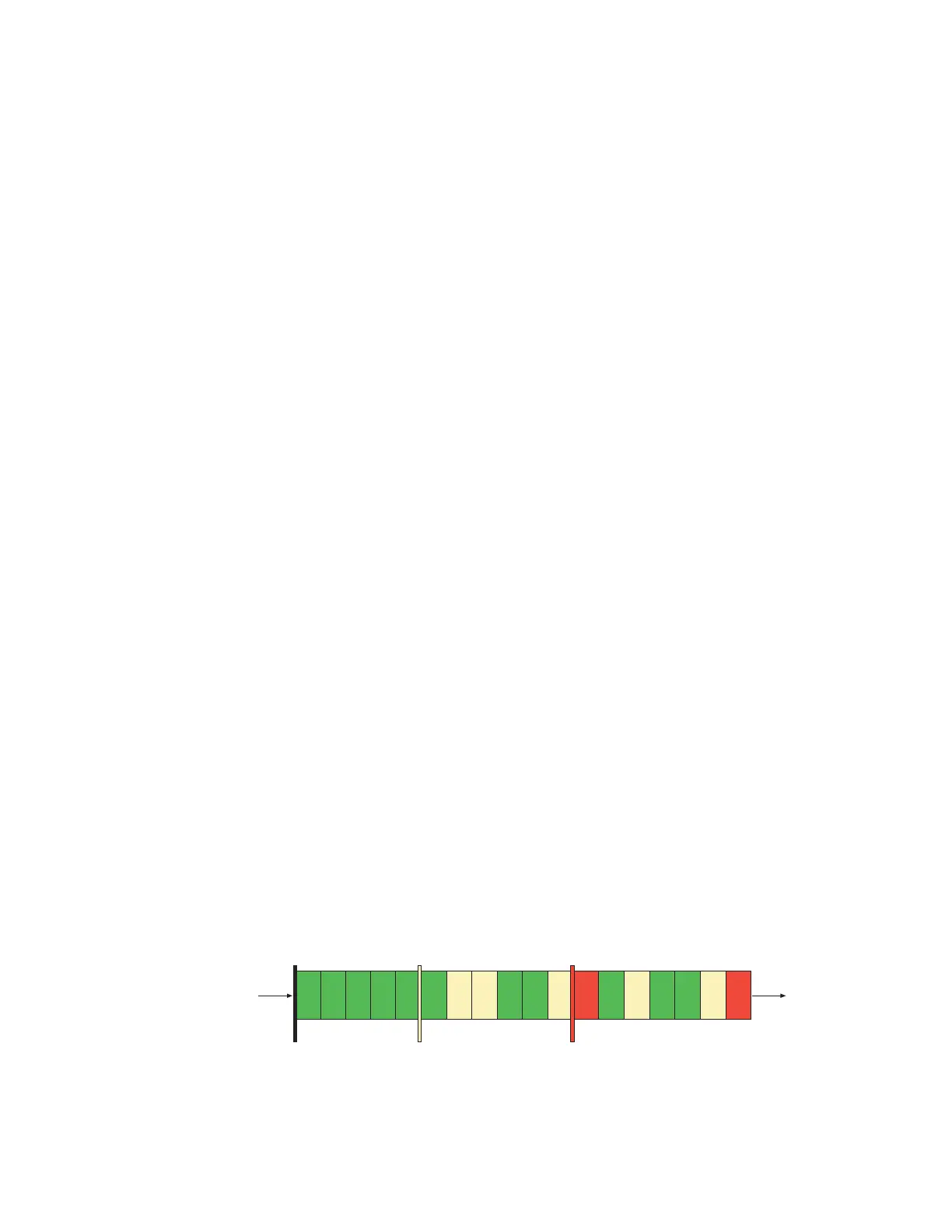Bandwidth Management ! 103
Chapter 3: Creating Rate-Limit Profiles
The queuing system uses drop eligibility to select packets for dropping when
congestion exists on an egress interface. This method is called dynamic color-based
threshold dropping. The 2-bit tag assigns a color code to the packet: red, yellow, or
green. Each packet queue has two color-based thresholds as well as a queue limit:
! Red packets are dropped when congestion causes the queue to fill above the
red threshold.
! Yellow packets are dropped when the yellow threshold is reached.
! Green packets are dropped when the queue limit is reached.
This internal tagging is done automatically when a rate-limit profile is applied to an
interface and does not necessarily reflect the operation of the policy on an interface.
Having a committed rate and a peak rate enables you to configure two different fill
rates for the token buckets. For example, you can configure the fill rate on the peak
token bucket to be faster than the fill rate on the committed bucket. This
configuration enables you to accommodate bursts of traffic, but, through coloring, it
enables you to identify which packets are committed and which ones are not.
To enforce ingress data rates below the physical line rate of a port, you can rate
limit a classified packet flow at ingress. A rate-limit profile with a policy rate-limit
profile rule provides this capability. The rate-limit profile defines the attributes of
the desired rate.
You can set an action based on one rate or two rates. These actions include drop,
transmit, or mark. The default is to transmit committed and conformed packets,
and to drop exceeded packets.
A color-coded tag is added automatically to each packet based on the following
categories:
! Committed—Green
! Conformed—Yellow
! Exceeded—Red
Figure 7 illustrates congestion management.
Figure 7: Congestion Management
Queue
Red drop thresholdYellow drop thresholdQueue limit
g013024

